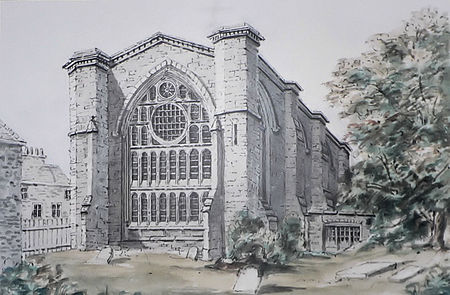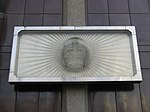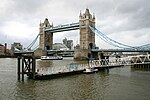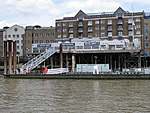Royal Foundation of St Katharine

St Katharine's by the Tower (full name Royal Hospital and Collegiate Church of St. Katharine by the Tower) was a medieval church and hospital next to the Tower of London. The establishment was founded in 1147 and the buildings demolished in 1825 to build St Katharine Docks, which takes its name from it. It was re-established elsewhere in London and 123 years later returned once more to the East End. The church was a royal peculiar and the precinct around it was an extra-parochial area, eventually becoming a civil parish, which was dissolved in 1895. The royal peculiar survives to the present day as the Royal Foundation of St Katharine. It is currently a Danish Lutheran Church.
Excerpt from the Wikipedia article Royal Foundation of St Katharine (License: CC BY-SA 3.0, Authors, Images).Royal Foundation of St Katharine
St. Katharine's Way, London Wapping
Geographical coordinates (GPS) Address Website Nearby Places Show on map
Geographical coordinates (GPS)
| Latitude | Longitude |
|---|---|
| N 51.506413888889 ° | E -0.072741666666667 ° |
Address
The Tower Hotel
St. Katharine's Way
E1W 1LD London, Wapping
England, United Kingdom
Open on Google Maps









